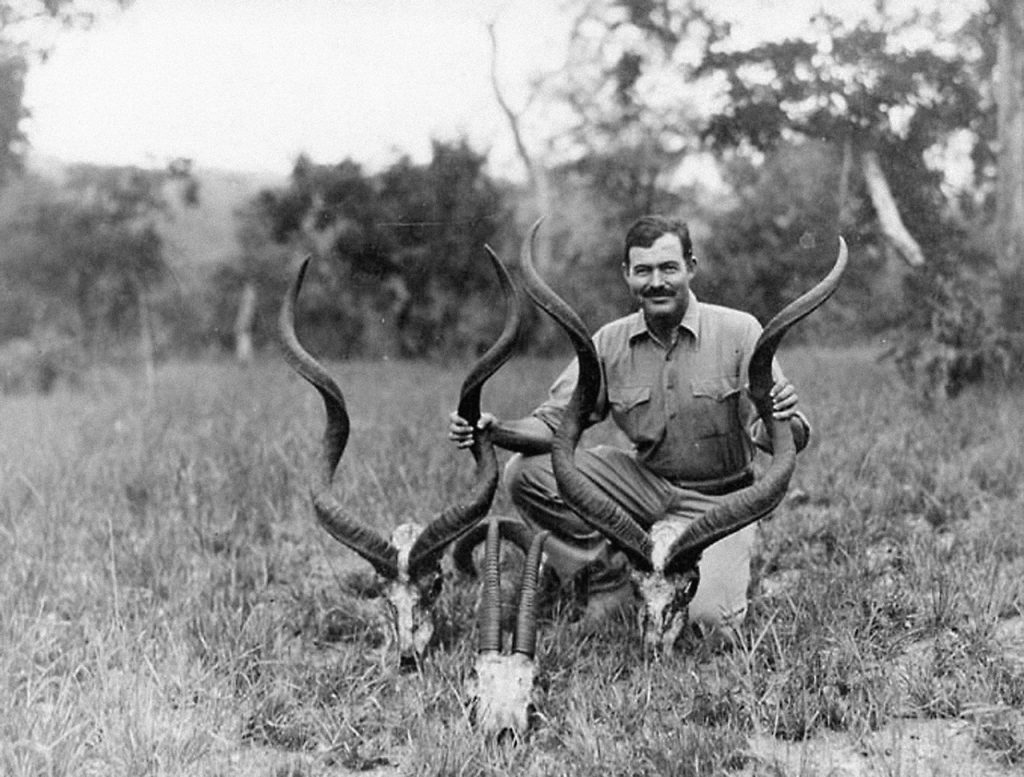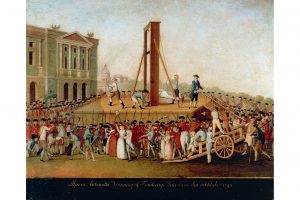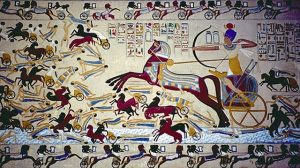Ernest Miller Hemingway, world-renowned American author and journalist, lived his life to the fullest. From a young age, Hemingway traveled around the globe as a journalist, soldier, and as a resident. Serving in both World Wars and influencing foreign conflicts by doing things like reporting on the Spanish Civil War, he experienced a great variety of cultures and people. As an author, his work had great literary merit, earning a Nobel Prize in Literature and the Pulitzer Prize for one of his later novels, The Old Man and the Sea.1.

Apart from composing literary masterpieces, Hemingway indulged in a multitude of activities, especially in different outdoor ventures. His two biggest passions were fishing off the coasts of Florida and Cuba and big-game hunting.2 In particular, he went hunting with one of his wives for months at a time. Hemingway’s life outside of writing was extremely busy, though his expeditions were often what brought his fictional stories to life.
Hemingway grew up going on hunting trips in and around Michigan with his father, and later he often traveled to foreign countries to hunt big game. One of his expeditions to Africa inspired the short story, The Short Happy Life of Francis Macomber. Taking place in a safari, the narrator Macomber, accompanied by his wife, faces the underlying consequences for showing fear as a hunter.3 Hemingway was a chaser—one who pursued his passions and values above regardless of their consequences. If Hemingway was interested in something, he would dive into it for large portions of his life.
In December of 1954, Hemingway and his wife Mary spent their holiday in an African safari, traveling by plane to the Congo. Unfortunately, while on a flight, their pilot collided with a telephone pole while they were flying at a low altitude. This crash injured the three people on board, and rendered them of minor to medium levels of injury. The entire party required medical assistance, stranded in the wilderness. The group opted to wait out the night, all while being surrounded by elephants who resided near the crash site.4
The next morning after being returned to camp by locals, Hemingway was prepared for takeoff to a local hospital for treatment of his injuries, along with his wife. Just as liftoff began, the plane suddenly was engulfed in flames, trapping the Hemingways and the pilot in a fireball. Barely escaping with their lives, all of the people on board were critically injured, with Hemingway suffering burns and even leaking cerebral fluids. After surviving two consecutive plane accidents, Hemingway took months to recover, spending most of that time restricted to a hospital bed. And with great luck, Hemingway was able to read the headlines that mistakenly reported his death after the crash; the man who knew the face of death dearly once again cheated an untimely fate.5

Hemingway was a man of grit who saw injuries barely restricting his wants. Only a couple months after the two accidents, Hemingway, more injured than his wife, went on and subsequently had trouble traversing on a fishing trip. Almost as quickly as the trip started, it ended in another tragic incident. Caught in a bush fire, Hemingway was burned all over his body, second-degree burns spread across his arms and face.6. Amazingly, and not surprisingly, Hemingway escaped the event without any major injuries. However, the series of catastrophes eventually led to his extended abuse of alcohol, a factor of his later life from which he would not escape free from damage.7 .
The next year, Hemingway was bedridden, constantly sick from a weakened immune system from a series of illnesses, including pneumonia. Eventually, in 1960, Hemingway checked into the Mayo Clinic in Minnesota to seek medical help. Oddly enough, his visitations to the clinic were mostly kept secret, and the FBI helped keep the incident classified.8 In the end in 1961, Hemingway was released from the clinic worse than when he entered. After an apparent suicide attempt, Hemingway was sent to the Sun Valley hospital until late June.9.

In the early morning of July the 2nd, Hemingway committed suicide in his Idaho home, at 61 years old.10 For him, a major downward spiral began after the plane crashed in the Congo. In a somber sense, Hemingway’s existence would have merely continued his depression and discontent if he had not committed suicide. Without knowing the life of Ernest Hemingway, readers would never fully understand the significance of his works. All authors write literary works for personal reasons, and the reason authors are so passionate about their work lies in their own backgrounds. As for Hemingway, his works symbolized the attrition he felt while working several roles he played in his life.
People may think Hemingway’s life reeked of bad luck, as a lot of his adult life was either marked by injury or a call to action on the battlefield. To Ernest Hemingway, this pain was fuel for his pen. Despite his unfortunate demise, his life was not wasted. Hemingway was not a coward for his actions. It could be argued that his exposure to the world and the connections he had to political conflicts caused his choice to take his life. In his later life, he was heavily surveyed by the CIA. He sensed their presence and felt quite skeptical. As with many literary figures, whose fame rises after their life has passed on, Hemingway’s greatest fame came after his death. For Hemingway, it always came easy to see what was worth living, and he wrote these words to share with the world.
- Linda Wagner-Martin, Ernest Hemingway: A Literary Life (New York: Palgrave Macmillan, 2007) 10-13 ↵
- Verna Kale, Ernest Hemingway (London: Reaktion Books, 2016). 30-32 ↵
- Linda Wagner-Martin, Ernest Hemingway: A Literary Life (New York: Palgrave Macmillan, 2007) 40-44. ↵
- Mary V. Dearborn, Ernest Hemingway: A Biography (New York: Knopf, 2017) 45-47 ↵
- Linda Wagner-Martin, Ernest Hemingway: A Literary Life (New York: Palgrave Macmillan, 2007), 90-94 ↵
- James M. Hutchisson, Ernest Hemingway: A New Life (University Park, Pennsylvania: The Pennsylvania State University Press, 2016) 148-152 ↵
- James M. Hutchisson, Ernest Hemingway: A New Life (University Park, Pennsylvania: The Pennsylvania State University Press, 2016) 219-223 ↵
- Verna Kale, Ernest Hemingway (London: Reaktion Books, 2016), 150-155 ↵
- Linda Wagner-Martin, Ernest Hemingway: A Literary Life (New York: Palgrave Macmillan, 2007) 183-187 ↵
- James M. Hutchisson, Ernest Hemingway: A New Life (University Park, Pennsylvania: The Pennsylvania State University Press, 2016) 246-447 ↵



35 comments
Mia Hernandez
This was a great story and article! It is crazy that he got his inspiration for his most famous pieces of art from all his near death experiences. His story was so interesting. His incidents really helped shape his life and his work. I can not imagine going through so many accidents and still continuing to work. It is sad to know that he fell into depression and ended his own life. Great article!
Nicolas Llosa
It was interesting reading about Hemingway and see how his experiences shaped his books. Living with such high adrenaline and experiencing near-death situations definitely had some impact on his work. It was sad how depression made him take his own life since he was a very talented person who had written amazing work. Overall this was an interesting story since I got to learn about how Hemingway saw these experiences as inspiration to write and learned more about him.
Alicia Martinez
When reading a great novel or poem, it is not typical to ponder on what might have inspired the piece of literature. For Ernest Hemingway, all of his near death experiences were the inspiration for his famous pieces of work and certainly left a traumatizing impact on the rest of his life. I never expected to read this interesting story in the article about him. I found that it provided a great depiction for who Hemmingway was and how these series of incidents shaped his life and reflected in his work.
Kendall Guajardo
This was such a great story. His life left no room to daydream as it seems like he did ever adrenaline inducing act possible. It is so sad how many people become plagued with one form of addiction or another after tragic accidents. Even though his life inspired his literary works it makes me wonder what kind of person he really was. I cannot imagine getting in accident after accident and continuing to do activities that can possibly lead to a slower recovery. I have noticed a pattern between living a life of glory and imminent death.
Mia Hernandez
Ernest Hemingway is known for his works like The Old Man and the Sea, but what I didn’t know about him was how his bouts with unluckiness helped to shape his works. As most authors draw from some sort of experience it would make sense that Hemingway would do the same thing as he had many accidents and experiences to draw from. It was sad to learn that he would fall into depression and eventually kill himself.
Sara Guerrero
The way you describe Ernest Hemingway’s life as bad luck seems to be right since I read that he was in so many accidents that he barely escaped with his life. I can’t imagine what he felt at the time and that these accidents kept happening to him. The fact that he kept writing through his experiences shows his grit, but it must’ve been hard for him as well. Interesting story.
Nelly Perez
Hemingway was known for his literary works. I did not know he went through a lot of incidents in his life. It was interesting to know that most of the incidents that occured helped shaped his books. His plane crash insoired the MacComb book, but the readers probably did not get to know that. I get that he probably did not want the public to know what was going on with him which was why he got the FBI involved. He probably sought protection from the public with their help.
Malleigh Ebel
I enjoyed the author’s focus on how his experiences effected his writing. I found it miraculous how accident prone yet lucky he was throughout his life. I believe the quick sequence of injuries must have been disheartening, but the author discussed how this fueled his writing. The ending of his life seems curious: it may be classified but I am left wondering why the FBI was shielding his hospital visits as well at the CIA’s interest in him?
Addie Piatz
I think it was very interesting to learn about Ernest Hemingway. I did not know a lot about him before reading this article, I think it is crazy how he got injured so many times and I have heard much about his books but did not know anything about him. I think it is unfortunate how all his fame came after his death but it was still well deserved.
Roberto Rodriguez
I have always really liked Erenest Hemingway’s novels, I always found them to be really interesting and extremely unique (especially the writing style). It is crazy how much he went through in his life, it is rare that someone goes through a near-death experience let alone three! It is great to know that we still appreciate his works even after his death, I know that I fully appreciate his works after reading this article. Great article!